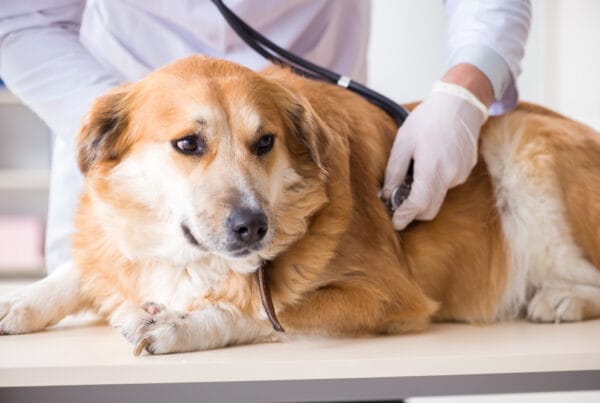By Carly Flink, DVM
The big “C” word can be scary to hear from your veterinarian. This is a fair response since it can be a life-altering diagnosis, but by educating yourself on what to look out for, it does not always need to be scary. Talking about the “C” word for what it is, cancer, can help you recognize early warning signs, and if needed, determine the best treatment plan for you and your pet.
Cancer is a large-encompassing term that refers to disease of abnormal cells. Typically, there is a set of rules that the body’s cells should follow. When cancer develops it is due to atypical cells not following the rules and often multiplying uncontrollably. Sometimes this can be localized to one tumor, and other times this may spread all over the body.
Because cancer can show up all over the body in many different forms it can be difficult to locate. Cancer may be living in your pet’s blood stream, or it may be localized to one small mass on their paw. So how do we find it?
First, you should watch your pet for any lumps or bumps that appear. If you note a new bump, let your veterinarian know immediately so that they can take a small sample and look at it under the microscope to determine if you should be worried or not. It is important to note that not all tumors are bad; some tumors are benign (non-cancerous) and do not invade or spread into their surroundings, while other tumors are malignant (cancerous) and may invade into their surroundings or even spread to other far-away parts of the body (metastasis).
Second, you should monitor your pet for weight loss or changes in behavior. Cancer notoriously causes a wide range of clinical signs. Signs may be subtle or obvious, and can come on gradually or all at once. If this sounds vague it’s because it is, but you know your pet best. General things to watch for and contact your veterinarian if seen include appetite loss or weight loss, decrease in energy, changes in breathing, bleeding (nose, urine, feces), changes in bathroom habits, or overall behavior changes. If these signs are seen and no other medical issues are evident, your veterinarian may recommend a “cancer hunt” which will include an array of diagnostics including bloodwork, chest x-rays, and abdominal ultrasound.
Third, you should keep up with your pet’s annual wellness examinations. Annual or biannual examinations are an important part of preventative care. Often cancer occurs in older pets, but that is not always the case. Having a veterinarian examine your pet and perform lab work each year will help catch signs of cancer early which can lead to a better prognosis and potentially more time with your pet.
So if your life is altered with your pet being diagnosed with cancer, what’s next? As mentioned prior, cancer is not a rule-follower. Not all cancers act the same and some are more worrying than others. The level of concern may be based on the type of cancer, where it is, and whether it has spread, so your veterinarian will likely recommend even more diagnostics to determine prognosis. With all of these tests and veterinary visits this will likely not be an inexpensive process. Pet insurance may help cover some of these costs if initiated prior to diagnosis. Additionally, an important part of the diagnosis will include thinking about your goals. Would you be interested in meeting with an oncologist (a veterinarian who specializes in all things cancer)? Or would you opt for palliative care (just keeping your pet comfortable in their end-of-life)? It is important to express these goals to your veterinarian. After all, you know your pet best which means you play the key role in diagnosis and treatment decisions regarding the big “C”.




